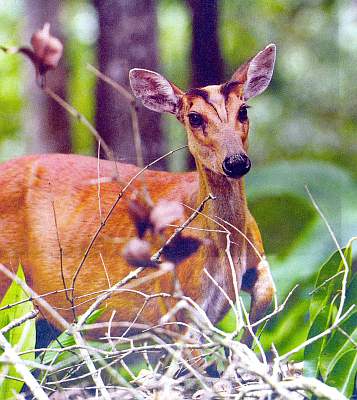Destroying the Forests (14 May)
Reintroducing Tigers (7 April)
14 May 2016
Destroying the Forests in Cambodia
 "In a startling admission,... the Ministry of Agriculture finally acknowledged that the Kingdom's forest cover has decreased rapidly over the past few decades, down from a high of 73 percent in 1965 to now, where only 49.5 percent of the country's forests remain. According to the annual report of the Ministry of Agriculture for 2016, government officials believe the country's forest cover will continue to decrease unless deforestation crimes and land clearances are slowed.
"In a startling admission,... the Ministry of Agriculture finally acknowledged that the Kingdom's forest cover has decreased rapidly over the past few decades, down from a high of 73 percent in 1965 to now, where only 49.5 percent of the country's forests remain. According to the annual report of the Ministry of Agriculture for 2016, government officials believe the country's forest cover will continue to decrease unless deforestation crimes and land clearances are slowed....Ouch Leng, president of the Cambodian Human Rights Task Force and a forest activist who was recently awarded the Goldman Environmental Award Prize, said the government lacked the will to truly protect Cambodia's forests, even going so far as to say that they treat environmental activists as their enemy. This gave free rein loggers to do as they wish, he said." [Photo of illegally logged timber and text are from the Khmer Times, 12 May 2016] |
7 April 2016
Reintroducing Tigers in Cambodia
 |
WWF Cambodia has a plan to reintroduce tigers into the forests of the northeastern part of the kingdom. The Mondulkiri Protected Forest, a 1,700 square-kilometer tract, is the proposed new home of the tigers but there are still great problems to be overcome before the first tigers are introduced in five or six years. One problem is the uncertain commitment on the part of the Forestry Administration to protect the new population from poaching. An equally vexing problem is supplying enough food for a sustainable tiger population large enough to breed successfully. An adult tiger eats about 50 deer-sized animals a year and there are basically only six species suitable for tiger food in the protected area: muntjac deer (pictured), wild pigs, oxen, and some other ungulates. A tiger kills about ten percent of the large mammals in its range each year so each tiger range needs to sustain about 500 deer and other large mammals. That's a lot of animals. |